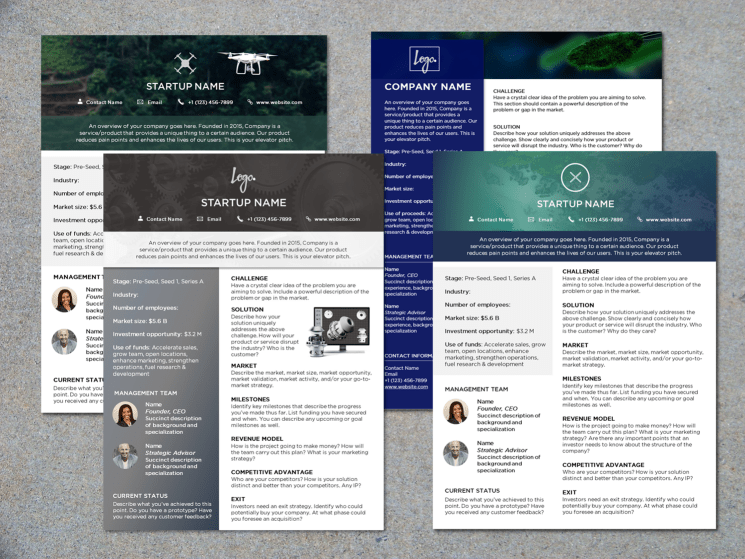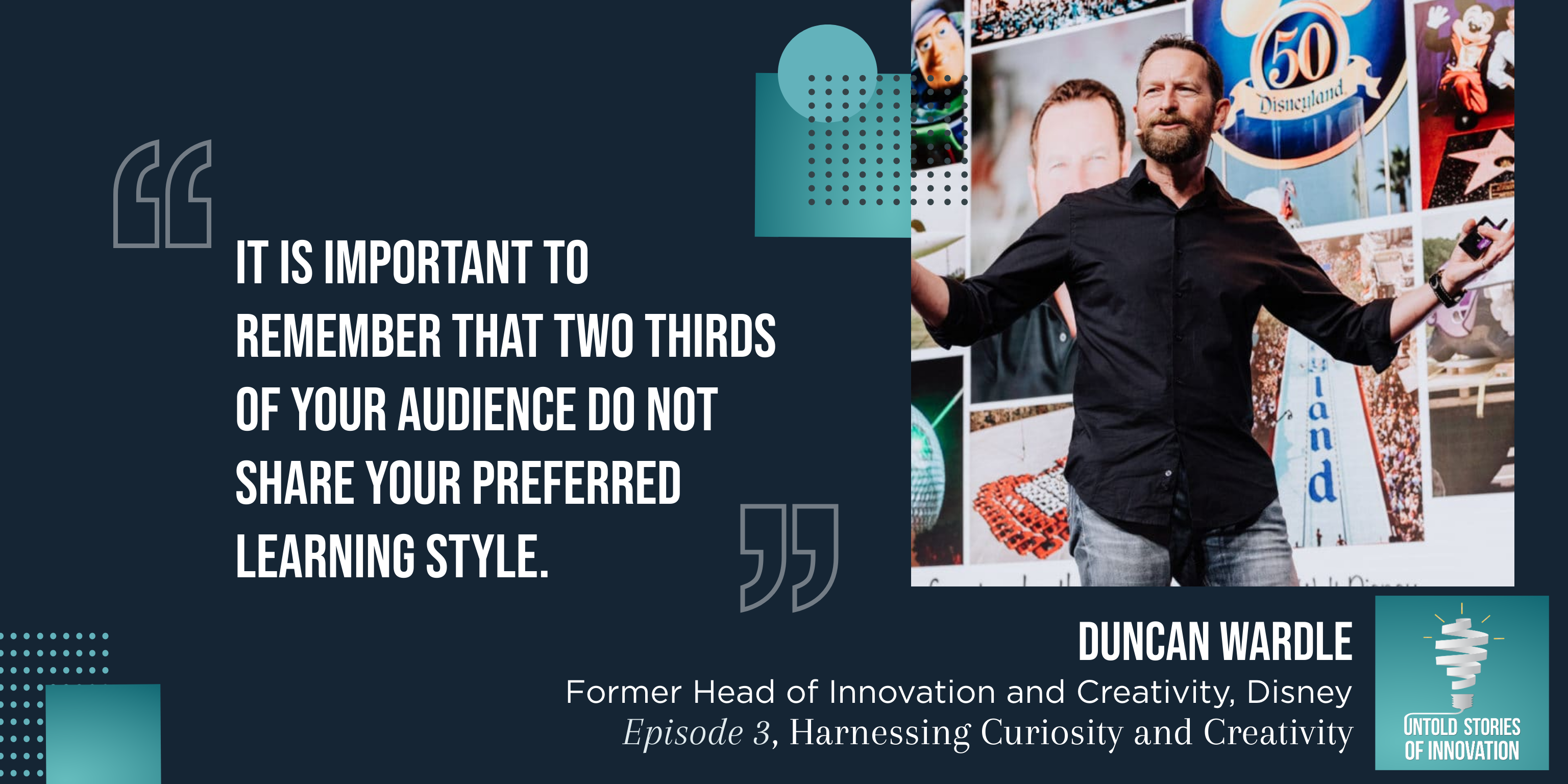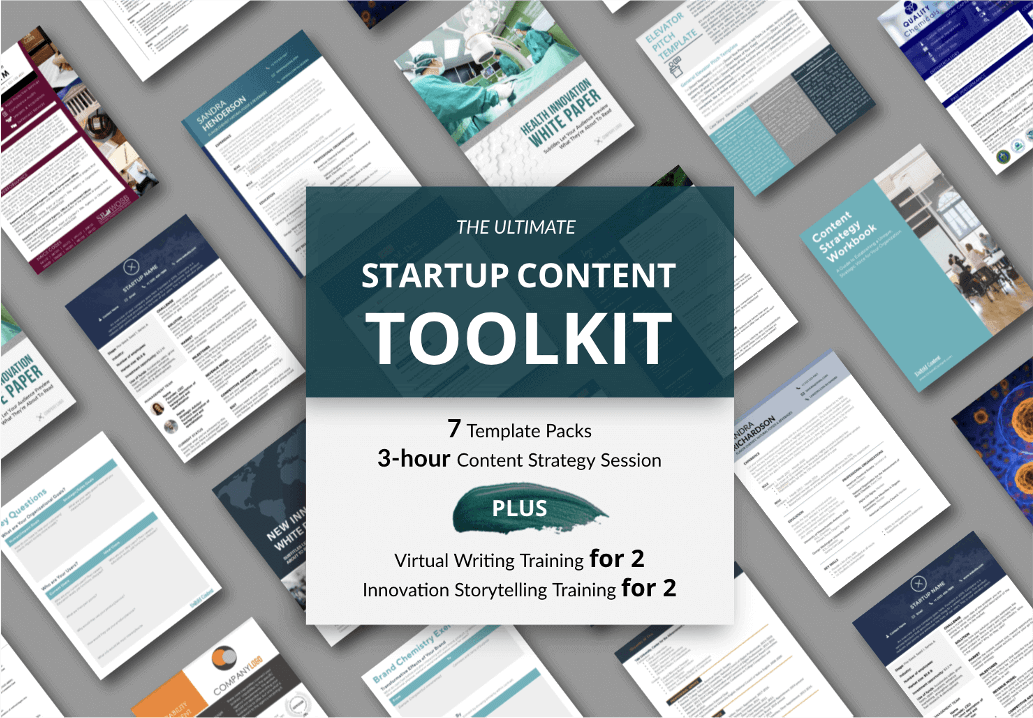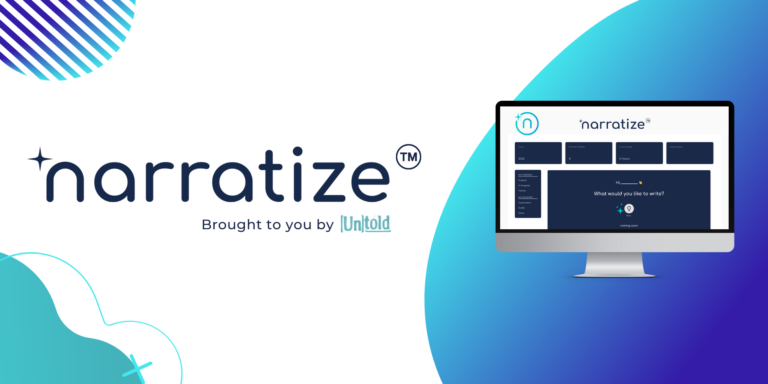Blog >> Startup Content Checklist: 10 Documents Every Startup Needs
Startup Content Checklist: 10 Documents Every Startup Needs
There’s a lot on a startup founder’s mind in the early stages. Business vision. Core products. Management structure. Outreach. But content creation is one often overlooked essential to the growth and success of your startup.
One of the main reasons content creation gets dropped is that it’s time consuming, and—without clear direction—it’s not always obvious what content is the most valuable. So, how do you determine what content is the most valuable?
Here’s our first tip: Start with internal documentation. Internal documents can create organizational alignment and clarity around the organization’s most important goals and objectives. From there, it’ll be easier to streamline your content creation for external audiences (think a pitch deck or social media).
We know the entrepreneurial journey is not one-size-fits-all. No matter your industry, you need these 10 important documents to set your startup up for success.
1. Startup Mission. Vision. Values.
Mission, vision, and values (MVV) statements are the foundation of your startup. Jim Collins and Jerry Porras point to the importance of MVV in their book Built to Last: Successful Habits of Visionary Companies. They found that non-negotiable core values are pivotal to the success of visionary, long-standing companies:
“In 17 of the 18 pairs of companies in our research, we found the visionary company was guided more by a core ideology—core values and a sense of purpose beyond just making money—than the comparison company was. A deeply held core ideology gives a company both a strong sense of identity and a thread of continuity that holds the organization together in the face of change” – Jim Collins
So, how do you create MVV statements that will propel your startup forward?
- A mission statement explains what you do and for whom
- A vision statement explains your dream for the future. Think big. How can your startup impact your end user? A brand vision board is a creative way to start
- Value statements are the core principles of your startup
You may have a good idea of your startup’s core ideology in your head, but you need to prioritize documenting your MVV. This will help align your employees and partners, while keeping everyone accountable to your standards.
2. Business Plan
Now that you have your mission, vision, and values, it’s time to develop the framework of your startup with a business plan. There are many different ways to write a business plan, and no way is right or wrong. Generally, lean or traditional business plans are most common.
As an early-stage startup, a short-term business plan or 3-6 month strategic plan are an appropriate place to start. Short-term business plans are useful for startups in particular, but some of your potential investors or partners may want to see a 5 year plan.
How far your business plan peers into the future largely depends on your industry and audience. First, you need to assess time scales, product life cycles, and exit strategies relevant to your industry. For example, consider how the app industry will change more rapidly than the chemicals industry. If you’re diving into an industry that evolves quickly, a short-term business plan will show potential partners or investors that you have realistic expectations for your future.
If you have potential to break into the industry for the long-term, we still recommend starting with a short-term business plan. Why? Most startups don’t make it past the five years. A short-term business plan shows that you have realistic expectations based on where you’re at in the startup process.
3. Marketing Plan
Now, it’s time to execute your business plan. Startups can slowly develop a comprehensive marketing plan overtime, and the plan will continue to evolve as the startup grows. Begin by focusing on your most valuable channel and documenting how to reach key audiences through that channel.
If you have a strong social media presence, for example, lean into that strength. Create processes to write social media content, develop strategies to optimize your content, and set measurable content goals.
4. Startup One-Pager
You have to earn the opportunity to pitch to investors. First, you send a paragraph (maybe two) to an investor upon referral. If that paragraph grabs the investor’s attention, they will opt in to view your startup one-pager.
A startup one-pager, sometimes called a one-page investor strategy or one-page business plan, communicates your company’s unique value proposition on one concise page. What’s important is that startup founders employ clear, logical, and convincing writing.
We interviewed several venture capitalists to learn best practices. Read our blog, “How to Create a Startup One-Pager,” or check out our professionally-designed Startup One-Pager Templates.
5. Pitch Deck
Once you get a seat at the table with potential investors, it’s important to bring an engaging pitch deck that can quickly capture their attention. Typically this looks like a visual presentation, often accompanied by a product demonstration, that conveys how your innovative product or service will disrupt an industry and get investors a big return on their investment.
Remember: A winning startup pitch deck explains the problem that your innovation solves, describing in detail the pain points associated with that problem. Then, when you explain how your innovation is a solution, it should give investors that “aha” moment.
There are 11 key components of a pitch deck you’ll want to include:
- Unique Value Proposition + Vision
- Problem + Pain Points
- Target Market
- Solution
- Business Model
- Milestones
- Sales Strategy
- Team
- Finials
- Competition
- Ask
Warning: Be careful not to bore your audience. Investors sit through thousands of pitch decks. How will you stand out? We interviewed former V.P. of Innovation and Creativity at the Walt Disney Company, Duncan Wardle, who believes it’s important to draw on different modes of storytelling to communicate your innovations and ideas. In fact, he thinks presenters should ditch the pitch deck altogether and find new and exciting ways to engage an audience.
Here’s a few of the tips and tricks he gave us to turn a presentation into a conversation:
- Feature visual, kinesthetic, and auditory elements in your presentation
- Paint a visual picture or develop animations
- Invite the audience to be part of the conversation
- Take a walk with the audience, literally or metaphorically
6. Elevator Pitch & Founder Bio
You won’t have the opportunity to present your pitch deck to everyone. Oftentimes you have a 30-second window to tell someone about your startup. This is where a practiced elevator pitch is crucial. Want to make sure you nail your pitch? This blog piece gives examples and formulas for every type of pitch setting.
In our podcast episode with angel investor Alicia Robb, we learn that a personal story is a compelling way to show real-time impact, allowing founders to connect with funders. For technical founders, it can be difficult to communicate an idea in a way non-technical investors will understand. A good story can convey passion, market value, credibility, and more in that short bit of time.
As a startup founder, it’s also important to have a short biography on deck. This will demonstrate your expertise and credibility and can be used in almost every setting where you introduce yourself: a presentation, your website, your social media profiles, etc.
7. Startup Capability Statement
If your startup is looking to pursue contracting work with a government agency, you’ll need a capability statement that can be tailored to fit the specific needs of the solicitation. This sleek, one-page document should communicate your core competencies, past performance, differentiators, company data, and contact information.
Ready to spark your small business’ public sector growth? Check out our Capability Statement Templates. We’ve done all the design work so you don’t have to. Simply fill in your startup’s information to increase your chances of winning bids and building strong relationships with contracting officers and prime government vendors.
8. Validation Documents
Create documents that establish your reputation and credibility to attract the attention of new partners and customers. Typically used by small businesses marketing to the private sector, white papers and case studies allow you to highlight your capabilities and present your accomplishments to potential customers, partners, or even investors.
- Case studies are a straightforward way to showcase your startup’s impact. You tell a story of problem and solution to show how your company can execute a project. Check out this case study about our #HamiltonProud Video Stories Campaign, where our team of writers, in collaboration with videographers, uncovered the life-changing impacts Hamilton City Schools has had on teachers, students and families.
- White papers engage key stakeholders and inspire action by persuading readers through well-researched facts about the existing solutions to a problem. White papers are research-based and informative first, and a persuasive marketing tool second. Just think of them as academic research papers for the business sector. Check out this white paper we created about communicating important COVID-19 information to families & children and see how it differs from our case study example on the same topic.
9. Startup Content Strategy
- Articulate your strategic vision, goals, and objectives
- Define your audience
- Choose content types and publication venues
- Develop content ideas and align them with “triggers” in your business plan
- Create a content calendar
- Measure Your Results
As our CEO, Katie Trauth Taylor, scaled Untold Content from one solopreneur to a small but mighty team and a nationwide network of contractors, she prioritized content strategy and thought leadership. And guess what? She credits this to our rapid growth.
Don’t know where to start? Our wide-range of Content Strategy and Creation Services are here to help! We start off with a 2-3 hour content strategy session, where we ask questions, lead interactive exercises, and provide recommendations to align our content development efforts with your organization’s purpose, goals, tactics, audiences, platforms, and storytelling techniques.
10. One-Page Strategy
A one-page strategy is a tracking document used to measure the health of your startup. At Untold Content, we refer to our one-page strategy in monthly strategic planning sessions to check in on annual sales, marketing, operations, key projects, and innovation efforts. This allows us to measure our progress on long-term goals and see if those initiatives are translating to revenue for the company.
Ready to Write?
We know content creation takes time, and not every startup founder has it. Our Startup Content Toolkit supports you in getting your startup off the ground. The toolkit includes 7 fully-customizable, professionally-designed templates:
- Startup One-Pager Template Pack
- Capability Statement Template Pack
- White Paper Template Pack
- Resume and CV Template Packs
- Content Strategy Workbook
- Elevator Pitch Template
PLUS a 3- hour Content Strategy Session led by our team of expert writers. Additionally, up to two startup founders will receive our self-paced, Virtual Wordsmith Writing Training AND Virtual Innovation Storytelling Training. Ready to take your startup to the next level?








